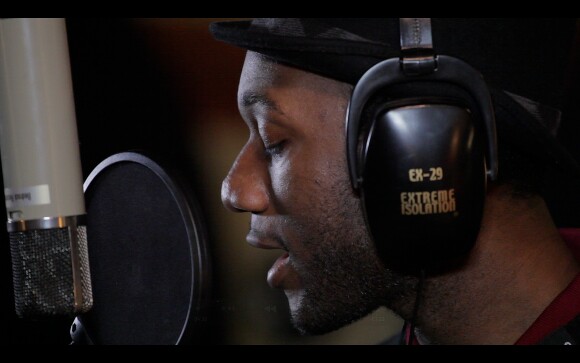Songs in the Key of Los Angeles: Coda
Songs in the Key of L.A. is a multi-platform collaboration between the Library Foundation of Los Angeles, the Los Angeles Public Library, and USC professor Josh Kun that brings to life the Library's extraordinary Southern California Sheet Music Collection. Five L.A. artists were invited to pick some sheet music, study it, and then interpret it in any style of their choosing. The finished products are now available for free download from the website of the Los Angeles Public Library, and Artbound produced short documentaries on the process.
What does it mean to sing a song of Los Angeles?
Over a year of Saturdays, that was probably the biggest question that we brought with us into the stacks of the downtown Central Library as we scoured, white-gloved, through hundreds of boxes of loose sheet music in the Library's extraordinary Southern California Sheet Music Collection in order to hunt down the lost musical archive of our city. Buried amidst the over 50,000 individual pieces of sheet music and over 50,000 individual songbooks were songs that had something to do with Los Angeles and Southern California.
Because so much of the sheet music in the Library's collection had never been recorded before, we decided to take a few pieces into the recording studio. Bedrock L.A. generously donated some studio time with engineers Tyler Gardin and Eric Rennaker and we invited five L.A. artists representing a range of sounds, scenes and genres -- Aloe Blacc, La Santa Cecilia, Julia Holter, I See Hawks in L.A., The Petrojvic Blasting Company -- to pick some sheet music, study it, and then interpret it in any style of their choosing. The finished products are now available for free download from the website of the Los Angeles Public Library. The series culminated with performance in downtown Los Angeles, featuring a vast array of musicians including Ozomatli (with a surprise collaboration with Stevie Wonder), I See Hawks in L.A., and Jackson Browne.
Over the last few weeks, Artbound's cameras were also on hand to document each session in the studios. Above, you can watch the entire series of featurettes in this special Artbound episode, and below you can read about what inspired each studio session, and enjoy the individual short documentaries too.

I See Hawks in L.A., "In The Valley of the San Joaquin"
Local California country stalwarts I See Hawks in L.A. take on 1904's "In The Valley of the San Joaquin," a beautiful piece of sheet music generously shared with the project by veteran Los Angeles collector Victoria Dailey. Written by John J. Cooke and S. Arthur Nichols, the song was published in Los Angeles by Robert E. Larkins. If any recordings were ever previously made of the song, none seem to exist, which makes this session particularly memorable-- a rare chance to hear this tale of longing for orange groves and blooming roses come back to life.

Aloe Blacc, "When The Girl You Love Lives in California"
"When The Girl You Love Lives in California" was the song that singer and rapper Aloe Blacc chose for his contribution to Songs in the Key of L.A. It may be from 1917, but Blacc found Olman and Berg's broken hearts storyline evergreen, a theme he was well familiar with from his own albums, 2006's "Shine Through" and 2010's "Good Things."

Julia Holter, "Where The Mission Bells Are Chiming"
L.A. musician Julia Holter's approach to "Where The Mission Bells Are Chiming" was microscopic and precise, layering stacks of synth and vocal lines into ballooning clouds of reverb. Drummer Corey Fogel came by to shower the sheet music's lonely friar with a rumbling thunderstorm. The result is strange, unsettling, and achingly beautiful.

Petrojvic Blasting Company, "Strolling Neath The California Moon"
L.A.'s top time-traveling street buskers Petrojvic Blasting Company were attracted to "Strolling Neath The California Moon" partly by the song's 1920s origin. The band's repertoire is carefully loaded with songs from the 20s and 30s that live across a musical map that connects old-time America to old-time Balkans, California and New Orleans to the musical traditions of Serbia, Moldova, and Clejani.
La Santa Cecilia, "Chiapanecas"
The 1938 hand-clapper from Olvera Street, "Chiapanecas," held deep meaning for L.A. band La Santa Cecilia. The famed L.A. tourist attraction was the very foundation of their own musical identity, where Singer Marisol Hernández and accordion player José "Pepe" Carlos learned about traditional music and performed for tips on the plaza.
Like these songs? Get a free download here.
Purchase the book, "Songs in the Key of Los Angeles" by Josh Kun.
The Bedrock Sessions were made possible by the generous support of Bedrock.LA, The Library Foundation of Los Angeles, & The Norman Lear Center.

Dig this story? Sign up for our newsletter to get unique arts & culture stories and videos from across Southern California in your inbox. Also, follow Artbound on Facebook and Twitter.


